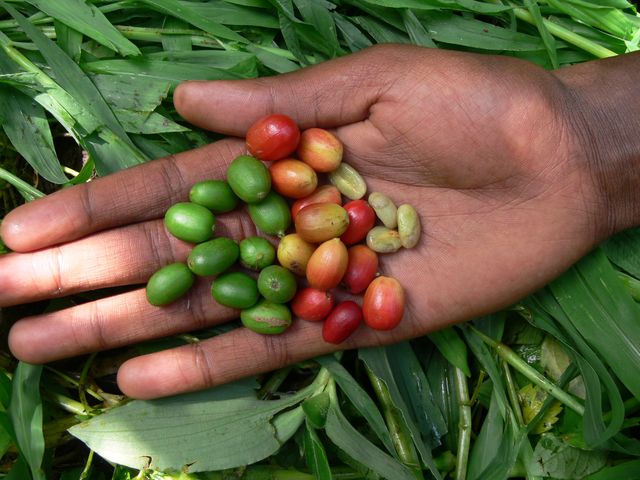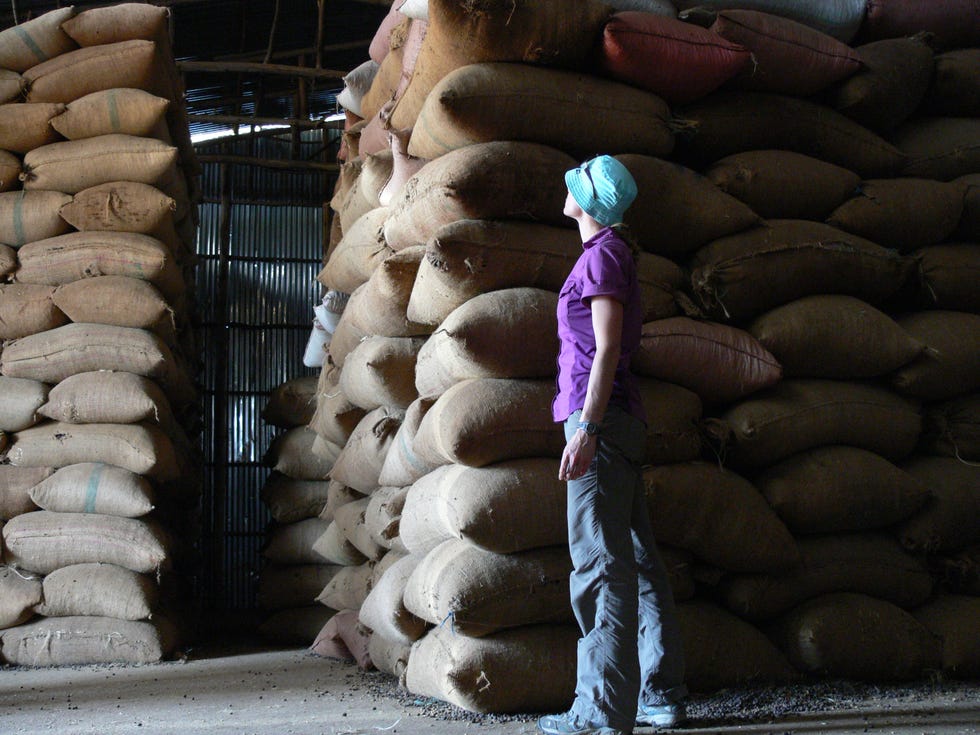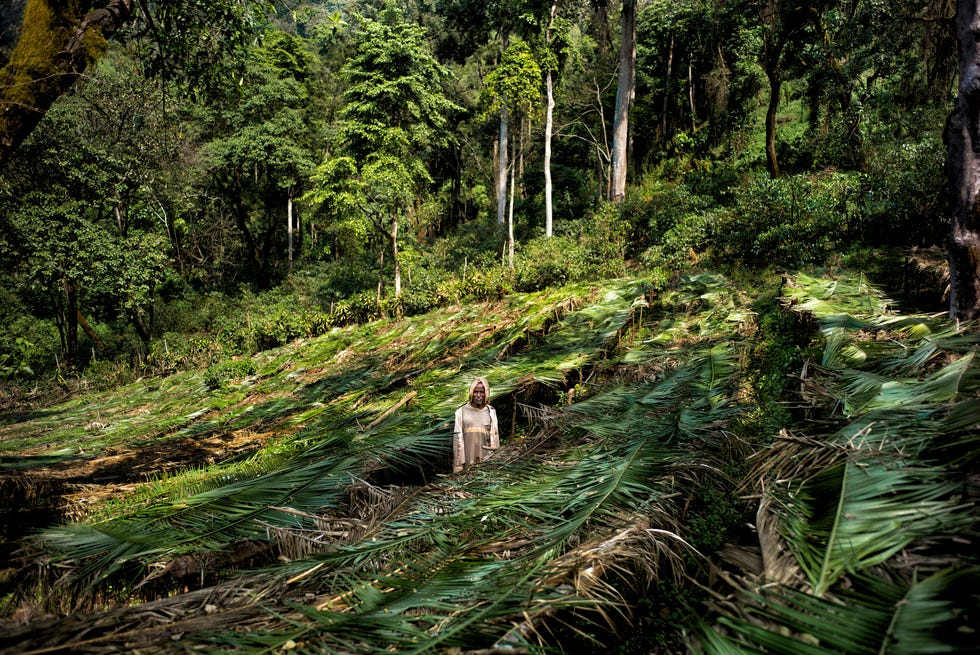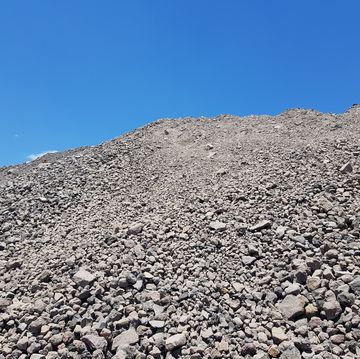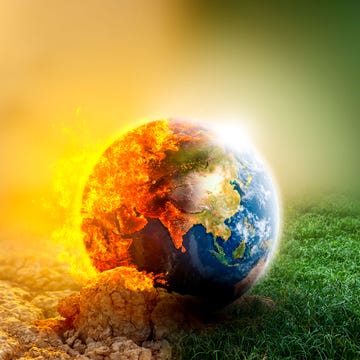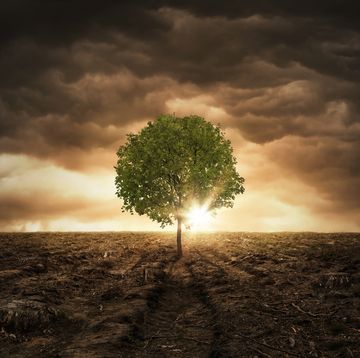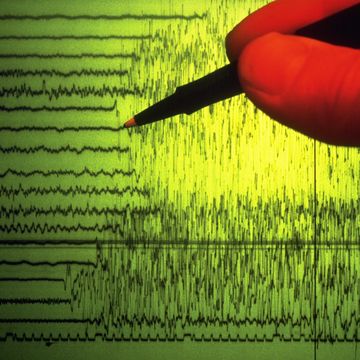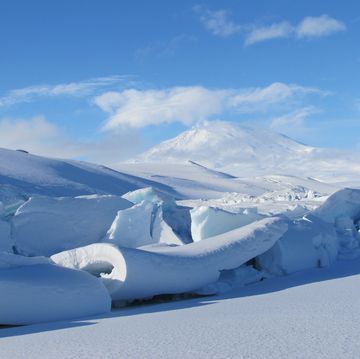The beans that made your morning cup of joe are probably from one of the two species of coffee: Arabica or Robusta. Those two are responsible for most of the commercial coffee in the world, but they are just two of hundreds of inter-related species of the coffee plant in the world—and many of those species are in danger.
A new study published today in Science Advances states that 60 percent of wild coffee species could go extinct in the coming decades—and some rarer plants may already be gone. And if you think saving the wild kinds of coffee isn't important, think again. Arabica and robusta are under threat from climate change, and saving the wild coffee plants might be the key to saving your daily cup.
"Wild species of coffee contain genetic traits that may be useful for the development (e.g., via plant breeding) of our cultivated coffees (Arabica and Robusta)," says Helen Chadburn, a species conservation assessor at the Kew Royal Botanic Garden and author on the paper, via email. "These traits include drought tolerance and pest resistance."
Not only that, but it's possible that varieties of wild coffee could lead us to new and even more delectable brews. "Some other coffee species are naturally low in caffeine, or have an excellent (and unusual) flavor," she says.
So what's driving all those coffee species to the brink? Arabica and Robusta are just two of 124 known coffee species. They're distributed across subsaharan Africa, for the most part, with a few wild species having spread into India, Australia, and other Pacific islands. Of the threatened species, most are under threat in Madagascar, where 43 species are on the decline, and Tanzania, where 12 are.
"Some species in Madagascar and Tanzania have very small distribution sizes which makes them more vulnerable to extinction, as just one threatening event can affect a large proportion of a population in a small area," Chadburn says. "There has also been habitat loss (particularly of forests) and degradation in both of these countries which has impacted on the natural habitat of the coffee species here."
Other species face different threats, including drought from the anticipated effects of climate change. Agricultural practices like cattle grazing also make some areas more vulnerable to fire, Chadburn says, as does deforestation to make room for more farms in developing countries. "Coffee species generally have a narrow range of suitable climatic conditions in which they will grow," Chadburn says, meaning that when the habitat of some of these species is gone, they're gone forever.
It's not all doom and gloom. Some countries like Ethiopia have launched the Yayu Forest Coffee Project, which encourages farmers to plant coffee inside forests, creating a cash crop while protecting precious woodlands. Some of the threatened species also live within protected lands, increasing their chances of survival—as well as the survival of the animals the coffee depends on to spread its seed.
Chadburn says practices like these could be the key to the survival of these wild species. There are other options too, but she says, "Conserving coffee in seed banks and specific field stations is often difficult and costly, but may also be needed."
Coffee is something many of us (including yours truly) can't live without. By better understanding—and being proactive—about the wild species, we may just find ways to brew up a brighter future for the coffee beans we love. And we might find a few new, weird tasty ones along the way.
